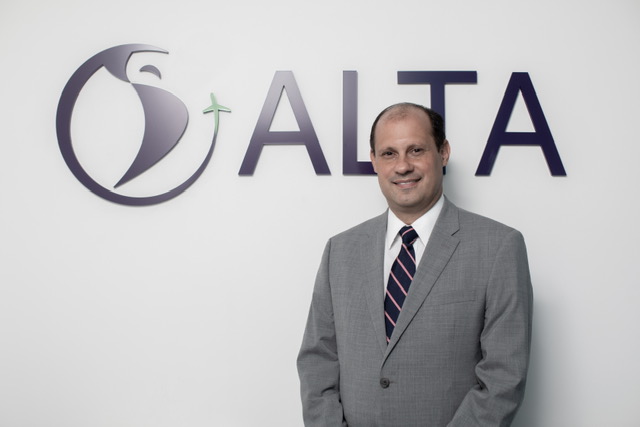By Jose Ricardo Botelho
Dear readers,
In 2018, inbound tourism in Peru grew above the South American average with 4.4 million international tourists (Promperú) and, in 2019, foreign exchange income from inbound tourism reached close to 5 billion dollars, up 6.2% compared to 2018 (MINCETUR). When we look internally, domestic tourism positioned itself as one of the economic sectors that had been thriving the fastest with very interesting prospects for the near future.
Peru has significant natural, historical and cultural attractive that draw people from all over the world and create 7.5% of the jobs in the country and contribute with 9.3% of the GDP (WTTC). With 60% of visitors to Peru arriving by air, the pandemic and its consequent mobility restrictions largely impacted this important sector of the economy.
In order to learn a more about the impact of the measures and what we need to work on to support the resumption of the travel and tourism sector in the country, I talked to Carlos Gutiérrez Laguna, General Manager of AETAI – Association of International Air Transport Companies from Peru. I invite you to read the interview below:
Have the measures and protocols implemented in Peru been effective?
Since we are facing a pandemic scenario, whose impact has not been seen in the history of aviation, the main thing is to watch over public health. The entire economy has been hit, although step by step certain safety measures and protocols are being made more flexible.
Looking back, we consider that some measures were taken without foreseeing the real impact and their implementation. For example, the imposition of a quarantine for passengers entering the country when there was no appropriate follow-up control.
What is the main challenge at the moment?
Achieving a steady and sustainable recovery of the industry both domestically and internationally. Considering in the latter case that unfortunately there are no uniform access measures (presenting negative COVID-19 tests with different dates in advance, conducting quarantines, specific travel insurance, among others) to the territories of the different countries, this recovery process will go at different speeds depending on the country in question.
However, the good news from all this is that a robust advance in the vaccination process is being reported, which opens up other challenges and chances and, most importantly, helps to regain traveler’s confidence. We have recent measures in several countries where those passengers who are vaccinated will not have to present a negative test or enter quarantine. The cancellation of these requirements will contribute to regaining demand.
It is worth noting that, if we face the emergence of new variables, AETAI will respect and support the measures implemented by the government to ensure the health and safety of both passengers and crew.
What will determine the recovery and growth of the commercial aviation market in the country?
Mainly, not to have any major setbacks on the road to recovery. That is, Peru’s air operations were closed from March 16 to July 14. As of July 15, local flights started, and in October, international flights started. However, during this process we experienced different restrictions and changes that impacted our way of working and the recovery of the commercial aviation market. For example, on January 4, a mandatory 14-day quarantine was imposed on anyone entering Peru, and in February, a negative test was required for domestic flights. As a consequence, in February -compared to January- we had a 38% and 63% drop in international and domestic flights, respectively.
Therefore, it is necessary to emphasize that the measures taken at short notice were not the most strategic ones, causing a great impact on the sector.
The industry needs to recover not only because it is the engine of connectivity but also because of its contribution to the tourism and foreign trade chain. Furthermore, according to studies conducted by IATA and Harvard University, air transport is the safest means of travel and the likelihood of a contagion inside an aircraft is less than 0.00001%.
How can the joint work between ALTA and AETAI be expanded?
We have been working along with ALTA for years. This is why our permanent aim is to deepen the relations between our associations, since the issues impacting the industry are common and the contribution provided by ALTA is invaluable thanks to the regional expertise and experience it has to offer. For example, in the reactivation processes, passenger control procedures, tariff conditions revisions, and others.
Given the international nature of air transport, we must seek for uniformization and consistent measures to support aviation.
Again, the need for harmonization is clear. A key to regaining the confidence in travelers lies in implementing proven protocols in a standardized manner and providing predictability in order to plan ahead. Peru has a lot to offer to travelers: a State committed to health and safety, an industry prepared to serve travelers with all the protocols and a wonderful destination, recognized by the World Economic Forum (WEF – 2019) as the third country with the highest number of species worldwide.
Peru has an interesting route to develop its air transport. There is demand and interest, and together we can achieve it.
Thank you for reading.
Until a next flight.
About the author: José Ricardo Botelho, Executive Director and CEO of the Latin American and Caribbean Air Transport Association (ALTA), has a law degree from the Catholic University of Salvador (Brazil) and has postgraduate degrees in Criminal Sciences from the Jorge Amado University and in Public Security Management from the National Police Academy.



